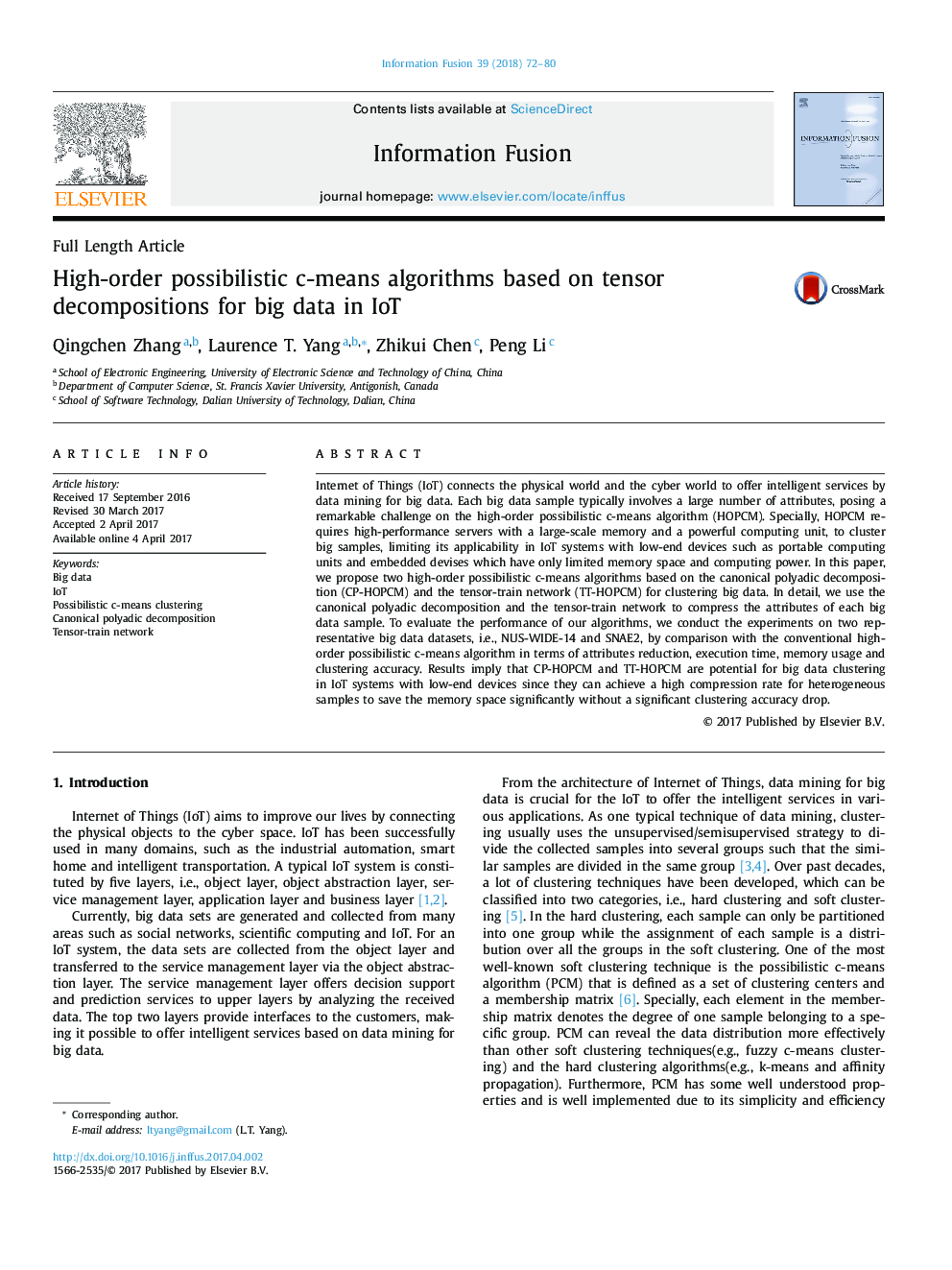| Article ID | Journal | Published Year | Pages | File Type |
|---|---|---|---|---|
| 4969155 | Information Fusion | 2018 | 9 Pages |
â¢A CP-HOPCM algorithm based on canonical polyadic decomposition is proposed.â¢The canonical polyadic decomposition in CP-HOPCM is used to compress the attributes.â¢A TT-HOPCM algorithm based on the tensor-network is proposed.â¢The tensor-network in TT-HOPCM is used to compress the attributes.â¢The proposed schemes compress the objects greatly without a high accuracy drop.
Internet of Things (IoT) connects the physical world and the cyber world to offer intelligent services by data mining for big data. Each big data sample typically involves a large number of attributes, posing a remarkable challenge on the high-order possibilistic c-means algorithm (HOPCM). Specially, HOPCM requires high-performance servers with a large-scale memory and a powerful computing unit, to cluster big samples, limiting its applicability in IoT systems with low-end devices such as portable computing units and embedded devises which have only limited memory space and computing power. In this paper, we propose two high-order possibilistic c-means algorithms based on the canonical polyadic decomposition (CP-HOPCM) and the tensor-train network (TT-HOPCM) for clustering big data. In detail, we use the canonical polyadic decomposition and the tensor-train network to compress the attributes of each big data sample. To evaluate the performance of our algorithms, we conduct the experiments on two representative big data datasets, i.e., NUS-WIDE-14 and SNAE2, by comparison with the conventional high-order possibilistic c-means algorithm in terms of attributes reduction, execution time, memory usage and clustering accuracy. Results imply that CP-HOPCM and TT-HOPCM are potential for big data clustering in IoT systems with low-end devices since they can achieve a high compression rate for heterogeneous samples to save the memory space significantly without a significant clustering accuracy drop.
